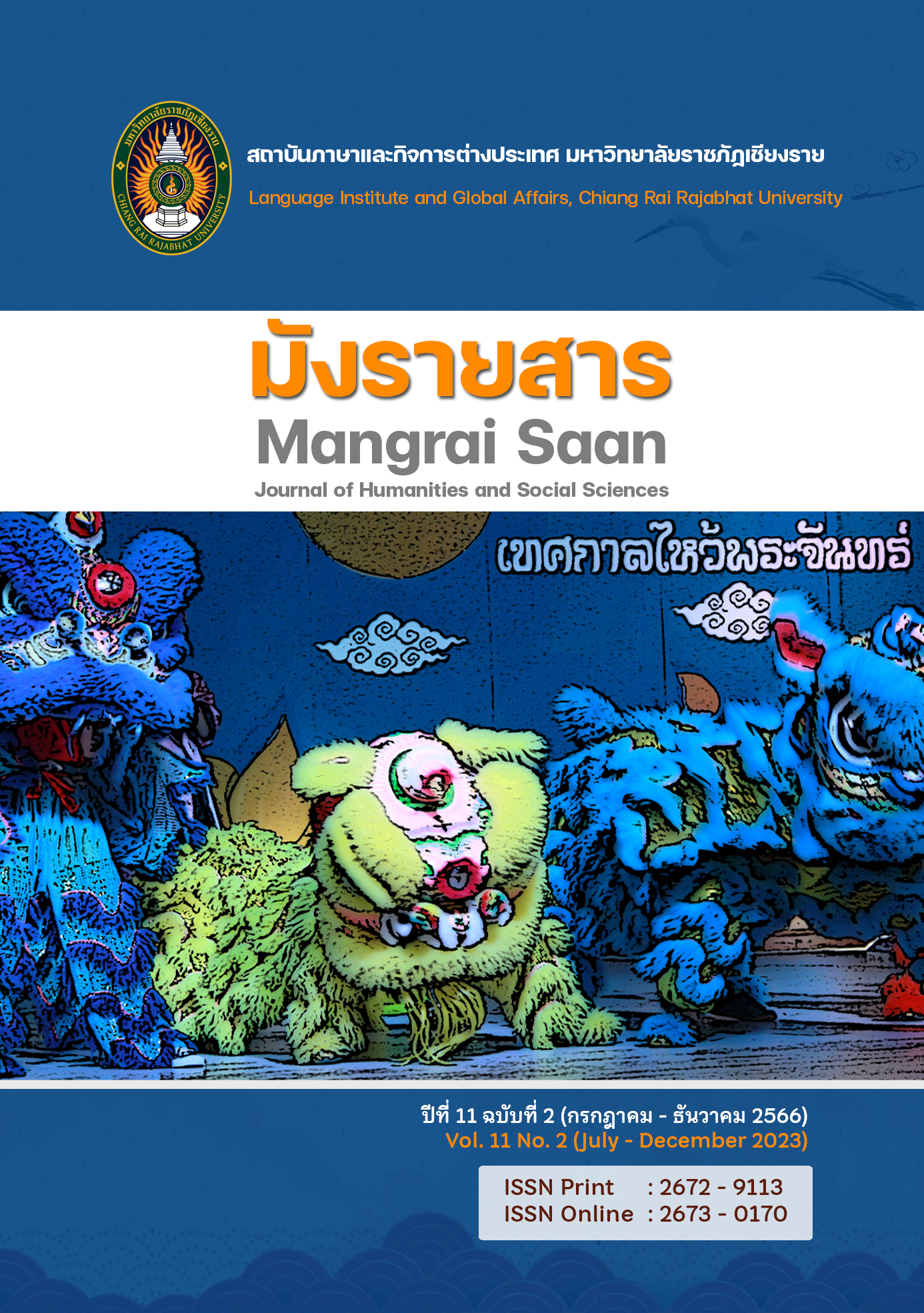The Wisdom of Goldsmiths in Lap-Lae, Uttaradit: A Study of Gold and Silver Purification Processes Using Acid Extraction Methods
Main Article Content
Abstract
This research aimed to document the wisdom knowledge and expertise of gold and silver purification processes employed by goldsmiths in Lap-Lae District, Uttaradit Province. Furthermore, it sought to verify the purity of gold and silver extracted through these processes. Employing the Purposive Random Sampling method, the researcher selected individuals who have received knowledge and expertise in extracting gold and pure silver through the acid etching method from JianBoonnak Gold Shop in Siphanommat Sub-district, Laplae District, Uttaradit Province, who are still alive today, namely the only researcher and manage knowledge and wisdom by oneself.
The researcher implemented Wisdom Knowledge Management by facilitating the conversion of Tacit Knowledge into Explicit Knowledge. This was achieved through various means, including the creation of demonstration videos, as well as photographs accompanied by informative captions (Descriptive research). These Knowledge Assets were utilized for the purpose of disseminating and sharing knowledge with a wider audience (Knowledge Publicizing).
The research findings revealed that the wisdom knowledge of gold and silver purification processes can be classified into three main categories: 1) materials and equipment; 2) procedure; and 3) evaluation. Furthermore, a comprehensive model, referred to as the “SUTTHA R. MODEL,” was developed to illustrate the step-by-step process of purifying these precious metals. The model serves as a practical framework for understanding and implementing the purification methods effectively. According to the following steps. S (Smelt) - U (Unify) - T (Thin) - T (Truncate) - H (Hasten Corrosion) - A (Amass) - R (Refine)
The gold and silver obtained through these processes were subsequently analysed for their purity using a Precious Metal Analyser. The analyses revealed that the gold had a purity of 99.34 %, while the silver had a purity of 99.56 %. These findings were consistent with the research hypotheses.
Article Details

This work is licensed under a Creative Commons Attribution-NonCommercial-NoDerivatives 4.0 International License.
The authors should ensure all the contents and information of the articles published in Mangraisaan. The editors do not share any related responsibility.
References
คติชนวิทยา, ศูนย์. (2550). รายงานการศึกษาโครงการวิจัยภาคสนามเรื่อง การคุ้มครองภูมิปัญญาท้องถิ่นไทย (ตามแผนพัฒนากฎหมายทรัพย์สินทางปัญญาปี 2550 กิจกรรมที่ 2 เพื่อนำเสนอกรมทรัพย์สินทางปัญญา กระทรวงพาณิชย์. กรุงเทพฯ: ศูนย์คติชนวิทยา คณะอักษรศาสตร์ จุฬาลงกรณ์มหาวิทยาลัย.
เที่ยงธรรม, สถาบัน (TTGI). (2556). การสกัดทอง. สืบค้นเมื่อ 3 เมษายน 2565. เข้าถึงได้จาก http://www.ttgold-institute.com/news/article_desc/38/
ประพนธ์ ผาสุขยืด. (2547). การจัดการความรู้ ฉบับมือใหม่หัดขับ. กรุงเทพฯ: ใยไหม.
ประภากร แก้ววรรณา. (2554). การจัดการความรู้ภูมิปัญญาท้องถิ่น. อุดรธานี: มหาวิทยาลัยราชภัฏอุดรธานี.
ปราโมทย์ ภูพานทอง. (ม.ป.ป.). การทำทองให้บริสุทธิ์ด้วยกรดกัดทองและสารประกอบซัลไฟต์. กรุงเทพฯ : สำนักอุตสาหกรรมพื้นฐาน กรมอุตสาหกรรมพื้นฐานและการเหมืองแร่
ผการัตน์ หาญวิวัฒน์วงศ์. (2549). รายงานวิชาการเรื่อง การแยกสกัดทองคำให้บริสุทธิ์ด้วยกรดออกซาลิก. กรุงเทพฯ : กลุ่มวิเคราะห์ สำนักอุตสาหกรรมพื้นฐาน กรมอุตสาหกรรมพื้นฐานและการเหมืองแร่.
วัฒนะ จูฑะวิภาต. (2535). ศิลปหัตถกรรมของช่างทองเมืองเพชร ความเป็นมาและสภาพปัจจุบัน. กรุงเทพฯ: อมรินทร์พริ้นติ้งกรุ๊พ.
ส่งเสริมวัฒนธรรม, กรม. (2558). คู่มือการเสนอขอขึ้นทะเบียนมรดกภูมิปัญญาทางวัฒนธรรมของชาติ. กรุงเทพฯ: สำนักงานกิจการโรงพิมพ์ องค์การสงเคราะห์ทหารผ่านศึก ในพระบรมราชูปถัมภ์.
เอกวิทย์ ณ ถลาง และคณะ. (2546). ภูมิปัญญาท้องถิ่นกับการจัดการความรู้. กรุงเทพฯ: อมรินทร์พริ้นติ้งแอนด์พับลิชชิ่ง.

